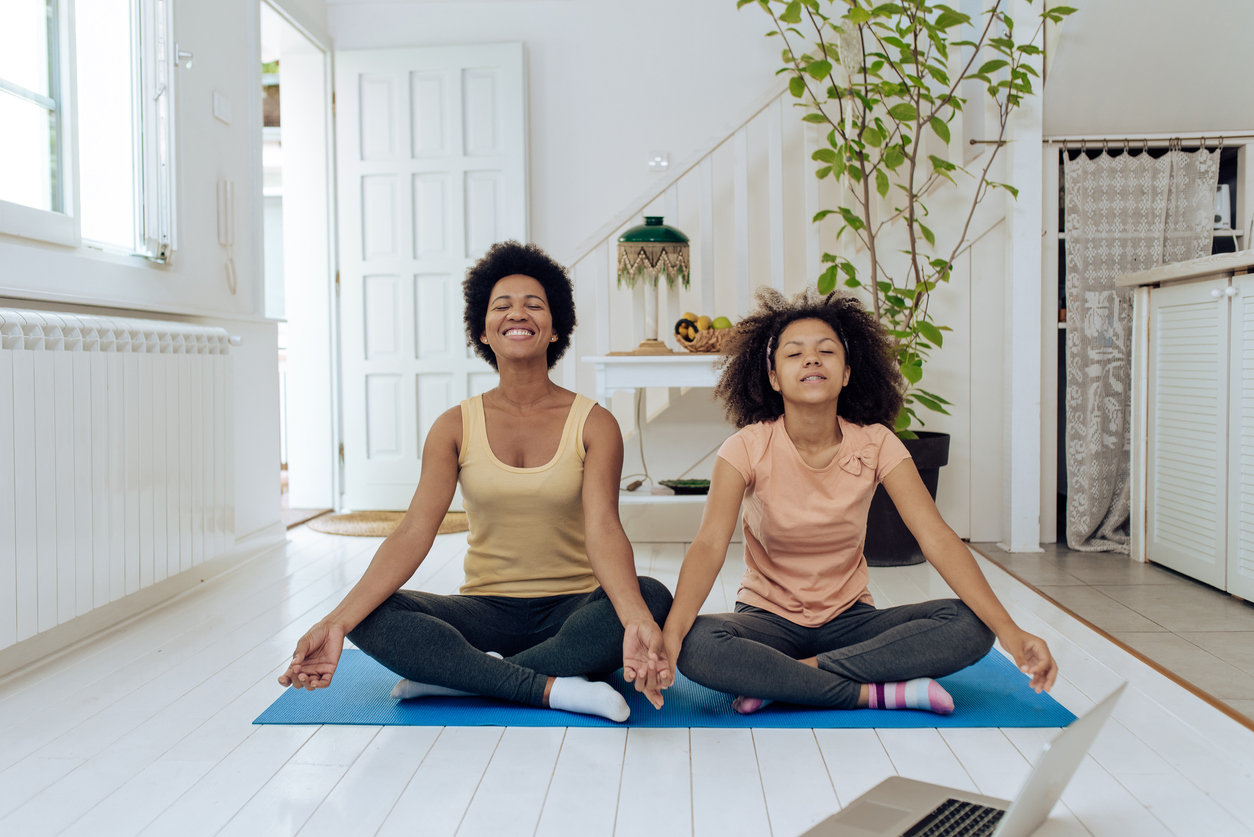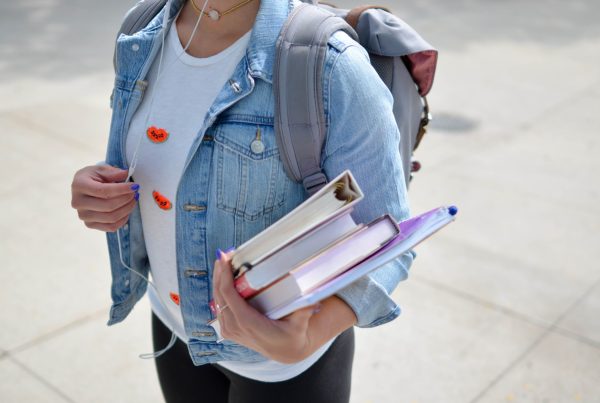Yoga offers a holistic approach to teenage anxiety treatment. Combining physical movement with mindfulness, it addresses the emotional, mental, and physical aspects of anxiety, offering a balanced path to wellness for teenagers facing stress and anxiety in their daily lives.
Teenage years are often marred by heightened anxiety due to various social, academic, and personal pressures.
Yoga, an ancient practice combining physical postures and mindful breathing, emerges as a beacon of hope in this turbulent phase. It offers not just physical benefits but also mental and emotional relief.
In this article, you will discover the benefits of exploring yoga for teenage anxiety.
Understanding Teenage Anxiety
Teenage anxiety is more than just occasional stress – it’s a widespread issue affecting teen mental health.
Symptoms range from persistent worry and fear to physical manifestations like restlessness or headaches. Factors contributing to teenage anxiety include academic pressures, social dynamics, and the challenges of identity formation. In severe cases, anxiety can impede daily activities, leading to avoidance behaviors and a decline in overall quality of life.
Understanding these challenges is the first step in seeking effective interventions, such as yoga, to help teenagers navigate these anxious times.
Yoga & Experiential Therapy
Yoga is increasingly recognized as a valuable component of experiential therapy and teen treatment programs, particularly for its effectiveness in addressing teenage anxiety. A recent study found yoga improves symptoms of generalized anxiety disorder, suggesting yoga may be helpful for some people.
Yoga’s emphasis on body awareness, breathing, and mindfulness complements the therapeutic goals of experiential therapy, providing teenagers with practical tools to manage anxiety.
Treatment programs often integrate yoga as a regular practice, helping teens develop resilience, emotional balance, and a healthier stress response.
The Benefits of Yoga for Teenage Anxiety
Yoga offers multifaceted benefits for teenagers struggling with anxiety. It goes beyond physical exercise, impacting mental and emotional well-being.
Through consistent practice, yoga can significantly alleviate the symptoms of anxiety, leading to a more balanced and peaceful state of mind.
Here are the benefits of yoga for teenage anxiety:
Reduces Stress Levels
Yoga effectively reduces stress levels in teenagers, particularly by emphasizing deep breathing and relaxation.
Techniques like pranayama (controlled breathing) and calming asanas (poses) help regulate the body’s stress response. By encouraging deep, rhythmic breathing, yoga shifts focus from the sympathetic ‘fight or flight’ response to the parasympathetic system, which promotes relaxation.
This transition lowers cortisol levels, the body’s primary stress hormone, decreasing overall stress. Yoga’s meditative elements also clear the mind, breaking cycles of stress-inducing thoughts.
This mental clarity is vital in managing anxiety, providing teens with a calmer, more focused approach to challenges. Regular yoga practice offers a valuable tool for teenagers, aiding them in navigating adolescence with decreased stress and greater peace of mind.
Improves Mood and Emotional Regulation
Yoga’s impact on mood and emotional regulation in teenagers is profound. Regular yoga practice helps balance the body’s stress hormones, leading to a reduction in mood swings and emotional volatility.
The physical postures (asanas) and breathing exercises (pranayama) stimulate the release of endorphins, the body’s natural mood elevators.
This biochemical shift can lead to a more consistent and positive mood. Moreover, yoga teaches teens to manage their emotions through mindfulness and self-awareness. They learn to recognize and regulate their emotional responses as they become more attuned to their physical sensations and breathing patterns.
This skill is particularly beneficial in managing the rapid emotional changes characteristic of the teenage years, promoting a sense of calm and emotional stability.
Enhances Concentration and Focus
Yoga enhances concentration and focus, crucial skills for teenagers navigating academic and personal challenges.
Holding yoga poses requires attention and discipline, training the mind to focus on the task. This focused attention during yoga can translate into improved concentration in other areas of life, such as studying or completing tasks. Additionally, many yoga practices involve meditation and mindfulness exercises that train the brain to resist distractions and stay engaged in the present moment.
These mindfulness practices have improved cognitive functions like memory and processing speed. For teenagers dealing with anxiety, the enhanced concentration and mental clarity gained from regular yoga practice can be particularly beneficial in managing their daily stressors and maintaining focus on their goals and responsibilities.
Increases Body Awareness
Yoga significantly increases body awareness, a key factor in managing teenage anxiety. Through various poses and movements, teens learn to pay close attention to their bodies, noticing how different positions and breathing techniques affect their physical and emotional state.
This heightened body awareness helps in identifying the physical manifestations of anxiety, such as muscle tension, shallow breathing, or restlessness. By becoming more attuned to these signals, teenagers can take proactive steps to manage their anxiety. For instance, recognizing the onset of tension can prompt them to engage in relaxing yoga poses or breathing exercises.
Increased body awareness also fosters a better understanding and appreciation of one’s body, which can improve overall self-esteem and body image – important aspects of mental health in the developmental years of adolescence.
Promotes Better Sleep
Yoga promotes better sleep, a crucial aspect of mental and physical health, especially for teenagers who often struggle with sleep disturbances due to stress and anxiety.
The relaxation techniques practiced in yoga, such as deep breathing, meditation, and gentle stretching, help calm the mind and release physical tension. These practices activate the parasympathetic nervous system, which is responsible for the body’s ‘rest and digest’ functions, making falling and staying asleep easier.
Regular yoga can help regulate sleep patterns by reducing stress hormones like cortisol, which often disrupt sleep. Improved sleep quality leads to better mood regulation, cognitive function, and overall well-being, making it a vital benefit of yoga for teenagers dealing with anxiety.
Encourages Mindfulness and Present Moment Awareness
Yoga is inherently a practice of mindfulness and present-moment awareness, both crucial in managing anxiety.
Through yoga, teenagers learn to focus on the here and now, paying attention to their breath, movements, and bodily sensations. This mindfulness practice helps them detach from past worries or future anxieties, reducing stress.
By concentrating on their yoga practice, they engage in a form of moving meditation, which brings mental clarity and calmness. Learning to be present in the moment through yoga can be applied in everyday life, helping teenagers to manage overwhelming feelings and stressful situations with greater ease.
This present-moment awareness fosters a sense of peace and equanimity, making it easier for them to navigate the complexities of teenage life with a balanced and mindful approach.
Builds Self-Confidence and Self-Esteem
Yoga significantly contributes to building self-confidence and self-esteem in teenagers. As they practice and progress in yoga, achieving new poses and improving their flexibility and strength, they experience a sense of accomplishment.
This achievement helps nurture a positive self-image.
Yoga teaches teens to appreciate their bodies for what they can do rather than how they look, shifting the focus from external appearance to internal strength and capability.
This shift is particularly important during adolescence, often marked by self-consciousness and comparison. Furthermore, yoga encourages setting personal goals and recognizing individual progress, fostering a sense of pride and self-worth.
These aspects of yoga help teenagers develop a stronger sense of self and a more confident approach to life’s challenges.
Provides Tools for Stress Management
Yoga provides teenagers with practical tools for stress management, which is essential in today’s fast-paced and pressure-filled environment.
Techniques such as deep breathing, mindfulness, and meditation, integral parts of yoga, are effective ways to calm the mind and reduce stress.
These practices teach teens to relax and manage their responses to stressful situations. For instance, breathing exercises can be used anywhere and anytime to induce relaxation and alleviate anxiety.
Mindfulness, learned through yoga, helps teens stay focused on the present, reducing worries about past or future events.
By incorporating these tools into their daily routines, teenagers can develop healthier ways to cope with stress, enhancing their ability to navigate life more easily and resiliently.
Improves Physical Health and Flexibility
Yoga offers numerous benefits for physical health and flexibility, particularly during the teenage years, a time of significant physical growth and development.
Regular yoga practice strengthens muscles, improves posture, and increases flexibility. This physical improvement can be especially important for teenagers who spend considerable time in sedentary activities like studying or using electronic devices.
Enhanced flexibility and strength help prevent injuries, improve athletic performance, and promote overall physical fitness. Additionally, the physical benefits of yoga, such as improved immune system functioning and enhanced respiratory and cardiovascular health, contribute to overall well-being, making teenagers more energetic and physically active in their daily lives.
Creates a Sense of Community and Belonging
Participating in yoga classes can create a sense of community and belonging among teenagers, an important factor in their social and emotional development.
Yoga classes offer a space where teens can connect with others with similar interests, fostering a sense of camaraderie and mutual support.
This community aspect of yoga can be particularly comforting for teens who might feel isolated or misunderstood in other areas of their lives. Being part of a yoga group provides a sense of inclusion and acceptance, helping teens feel less alone in their experiences.
Additionally, the non-competitive nature of yoga encourages a supportive and nurturing environment where teenagers can engage and interact positively with their peers, further enhancing their sense of belonging and social connectedness.
Yoga & Experiential Therapy at Visions Treatment Centers
At Visions Treatment Centers, we understand the unique challenges faced by teenagers with anxiety and offer unique teenage anxiety treatment in Southern California.
Our comprehensive programs, integrating yoga and experiential therapy, are designed to offer a holistic approach to wellness. Our experienced professionals guide each teen in developing effective coping mechanisms, building resilience, and fostering emotional balance.
Contact us to learn how we can support your teen’s journey towards a healthier, happier life.
Conclusion
Yoga serves as a multifaceted tool for combating teenage anxiety, offering a blend of physical, mental, and emotional benefits.
It empowers teens with enhanced mood regulation, stress management skills, and improved concentration. Yoga also cultivates mindfulness, better sleep, and body awareness while boosting self-confidence and fostering community connections.
This holistic approach makes yoga an ideal practice for teenagers navigating the complexities of adolescence, providing a supportive pathway to a balanced and healthier well-being.








